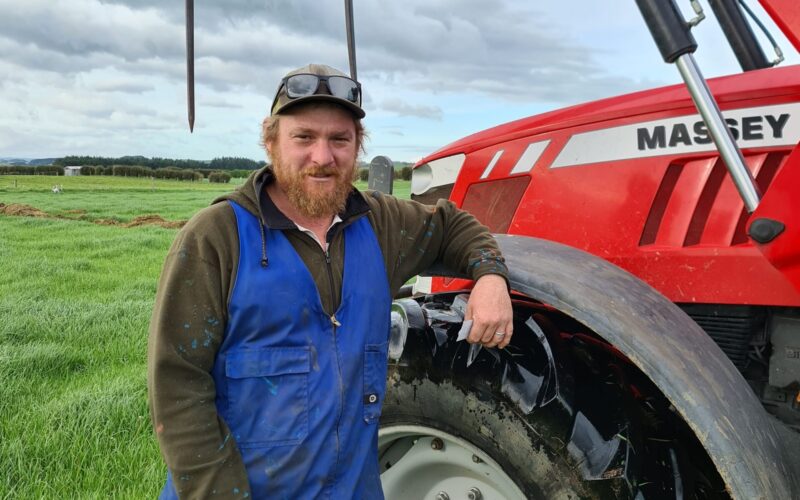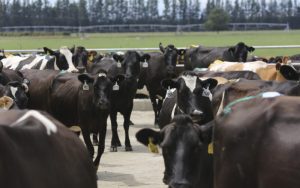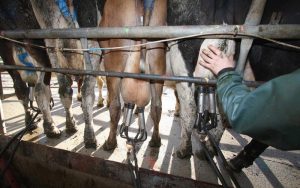
Ag advocacy group says farm owners now have a better understanding of what it means to be in business with a contract milker.
Opportunities for contract milkers to succeed, and overall standards in the industry, have improved out of sight compared to the “wild west” of a decade ago, Brendan Attrill says.
“I’ll admit things were pretty sloppy when contract milking first emerged in New Zealand 10 years back,” the newly elected Federated Farmers sharefarm owner chair says.
“That’s why we in Federated Farmers made so many changes to knock things into shape.
“We brought in the Guaranteed Milk Return, and we worked with farmers across New Zealand to increase the net reward for our contract milkers.
“We’ve also worked really hard to address problems with the behaviour of some of our farm owners.”
Attrill says the result is a much higher standard now for both parties – farm owners and contract milkers.
“Where we’ve got to these days is absolutely night and day compared to a decade ago.
“We’ve got good rewards for our contract milkers, in general, and we’ve got contract milkers understanding what they’ve signed into.
“When we started out with this, I don’t think we knew exactly who contract milking was best suited to and who should sign up, but now we’ve got a much clearer picture.”
On the other side, farm owners now have a better understanding of what it means to be in business with a contract milker, Attrill says.
“Ten years back, I don’t think many farm owners knew things were meant to work differently with a contract milker, compared to having an employed farm manager.
“They were almost viewed as an employee who could be directed what to do each day, rather than as a self-employed business owner working to a contract.
“Contract milking was new on the block, so there was a lot of education needed about how we manage our contract milkers and how we keep them positive.
“We’ve done a lot of education in that space and most farm owners now get it.”
Sam Ebbett, Taranaki dairy farmer and Federated Farmers sharemilker chair, agrees the contract milking industry is in a much better place.
“It’s definitely improved. The number of bad stories we hear is reducing all the time.
“We’ve made some pretty big headway in our agreements to tighten up some of the loose ends.”
He says there’s now a lot more knowledge and understanding on both sides of the relationship.
“We’ve done so much work educating contract milkers, who are much stronger with financial budgeting than in the past.
“Back in the day you’d have had no pay during June, July, August, and then a pretty big one in September, and guys would rush out and buy a new ute, but that doesn’t happen much now.”
For their part, farm owners are better at budgeting for having a contract milker on their property, Ebbett says.
“We now have the likes of a split payment by the farm owner, so you have 80% of total production split over 12 months, so it helps those younger contract milkers not get into such a hole.
“That’s much more common in recent years.”
A good indicator that things have improved is the decrease in number of disputes, Attrill says.
“Yes, we still have disputes between parties every season, but nothing like how it was in the beginning when we had disputes everywhere – they were non-stop.”
Attrill agrees a big reason for the lift in standards has been the ongoing reviews of Federated Farmers’ agreements.
“We’ve had a talented group of farmers from both sides going through the Federated Farmers contracts and agreements every year for the past 40 or 50 years.
“That’s been no different with the contract milking agreements since their inception to make sure they’re fair and balanced.
“So much rigour goes into how we review and update those agreements, so farm owners and contract milkers can be confident they have a watertight agreement.”
He says the advent of hybrid contracts over the past two or three years has helped a lot too.
“That means those contract milkers who want security can now get paid every month rather than being directly connected to the milk processor.
“That’s been a real success story in keeping it positive and helping us retain talent in the industry.”
Both Ebbett and Attrill emphasise there’s still a lot of room to keep raising the bar.
“We’ve come a long, long way in the last 10 years, but that’s not to say we don’t have room to improve,” Ebbett says.
“Now our priority is picking up those laggards who are still holding the industry back.
“But compared to a decade ago, it’s completely different.”
You can now read the most important #news on #eDairyNews #Whatsapp channels!!!
🇺🇸 eDairy News INGLÊS: https://whatsapp.com/channel/0029VaKsjzGDTkJyIN6hcP1K

























